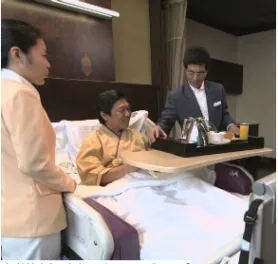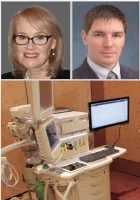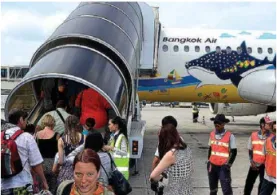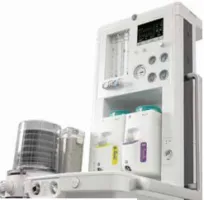Singapore
New Zealand Ministry of Health’s chief upgrades system by learning from shortfalls
Chai Chuah is the Acting Director-General for Health and Chief Executive of the Ministry of Health in New Zealand. In this interview, he shares with Healthcare Asia lessons learned from the government’s response to the Christchurch earthquake, a new philosophy in approaching the healthcare targets in New Zealand, the biggest challenges facing his leadership and the innovative ways that the Ministry of Health is making healthcare better for New Zealanders.
When privilege trumps privacy
Singapore’s chronic health patients may highly value their privacy, but many can live with the idea of strangers seeing their medical records if it means they can view their charts over the Internet.
Accreditation’s not just for show anymore
When Apollo Hospitals Group devised its strategy to deliver worldclass patient care, it knew for certain that securing the right accreditation was only the first step.
A bite of the China pie
Most people think the opportunities in healthcare are around ever growing private hospital groups. But one Singaporean company is showing there is more than one way to take a bite out of the healthcare apple. Q&M runs 60 dental practices across Singapore, with more clinics in Malaysia and China — making it one of the fastest growing dental chains in Asia.
Online commentary submission guidelines
So what are we looking for?
1. Length. Your column doesn't need to be long - 300 words is enough, 600 is ideal. Keep it brief.
Anesthesia Information Management System accelerates patient care
When patients step into one of the more cutting-edge clinics or hospitals in Singapore or Malaysia, many may notice a marked improvement in care delivery — procedures are completed more quickly and smoothly, and operating staff give more attention to the patient, rather than focusing on paperwork.
Finding the right mix of public and private funding
Whether it’s public or private, or a mix of both, citizens still look to those at the helm of leadership to provide the best for their medical needs.
A different take on health care innovation
How CapsuleTech is reinventing our idea of medical solutions
Accreditation’s not just for show anymore
When Apollo Hospitals Group devised its strategy to deliver world class patient care, it knew for certain that securing the right accreditation was only the first step.
The rise of biologics in meeting clinical needs
The Asian pharmaceuticals industry is currently evolving under the influence of four innovation trends, according to Richard M. Johnson, President & CEO, Parenteral Drug Association (PDA), a leading non-profit organization advising the pharmaceutical industry. “On the product side, one is the growing importance of biological therapeutics. These products require more complex andhighly controlled manufacturing processes, and more advanced facilities and Quality Control methodologies. The second trend is for more self-administration (for example: pre-filled syringes and autoinjectors) versus administration by health care workers,” says Johnson.
Thailand ahead in med tourism
Thailand may not match as Singapore as athe destination of choice for complex treatments, but it is certainly welcoming many international patients each year, making it one of ASEAN’s leaders in medical tourism. Over 2.5m patients crossed the borders to Thailand in 2012 alone, and the momentum is expected to increase when the ASEAN Economic Community becomes effective in 2015. CIMB analyst Gary Ng predicts the sector will generate approximately THB803bn (US$25bn) in revenues from medical tourism between 2012-2016.
What you need to know about Asia’s healthcare expenditure
Healthcare systems all over Asia are undergoing significant change. Just as the state of economic development across the region varies, the development of healthcare systems in different Asian countries differs from one another. Among the more developed economies, health systems face rising demand for specialised services. In Japan and Singapore for example, governments and healthcare players are striving to meet the needs of their aging populations. At the same time, there are cost pressures and market restructuring even as competition intensifies. Among emerging economies such as Indonesia and the Philippines, young and mushrooming urban populations are stretching the capacity of their countries’ healthcare facilities. One way by which we can further examine the variance across Asian health systems is by observing their differing expenditure on healthcare.
Raffles Medical looks to cash in on China’s healthcare boom
Raffles Medical Group is looking to bounce by breaking into China this year. The Singapore-based health care provider, which operates dozens of medical clinics and laboratories as well as the Raffles Hospital, encountered a slight growth hiccup but it hopes to re-ignite its growth engine through an aggressive China expansion strategy. RFMD announced its collaboration with Shanghai Lujiazui to build a 300-bed hospital in Pudong, the bustling financial district in Shanghai, teeming with wealthy expats and a local population of more than 5 million. Raffles Medical has also agreed to work with China Merchant Group for a similar 200-bed hospital venture in Shenzhen, one of the country’s most successful Special Economic Zones situated just north of Hong Kong. Management is even considering building hospitals in the capital Beijing.
Innovation in rural Indonesia
With nearly half of the population living in peripheral regions, performing routine and emergency surgeries in rural Indonesia is becoming a tremendous challenge. Low levels of clinical care and a lack of suitable tools and equipment are not helping either.
Who’s winning the $10.8bn Asian mHealth race?
While Asian governments and users recognize the efficiency of eHealth programmes, eHealth is still in the early stages of adoption.
Future directions of healthcare policy in South East Asia
South East Asia is a very broadly used term and for the purposes of this article, we are focusing on the Association of South East Asian Nations (ASEAN), which comprises of Malaysia, Singapore, Thailand, Indonesia, Philippines, Vietnam, Cambodia, Laos, Myanmar and Brunei. The social, cultural, religious, economic, political and infrastructural fabrics of these nations vary significantly, making this region both extremely diverse and disparate. Setting this context allows us to understand and appreciate the variability in access, affordability and quality of healthcare across this region.

















 Advertise
Advertise














